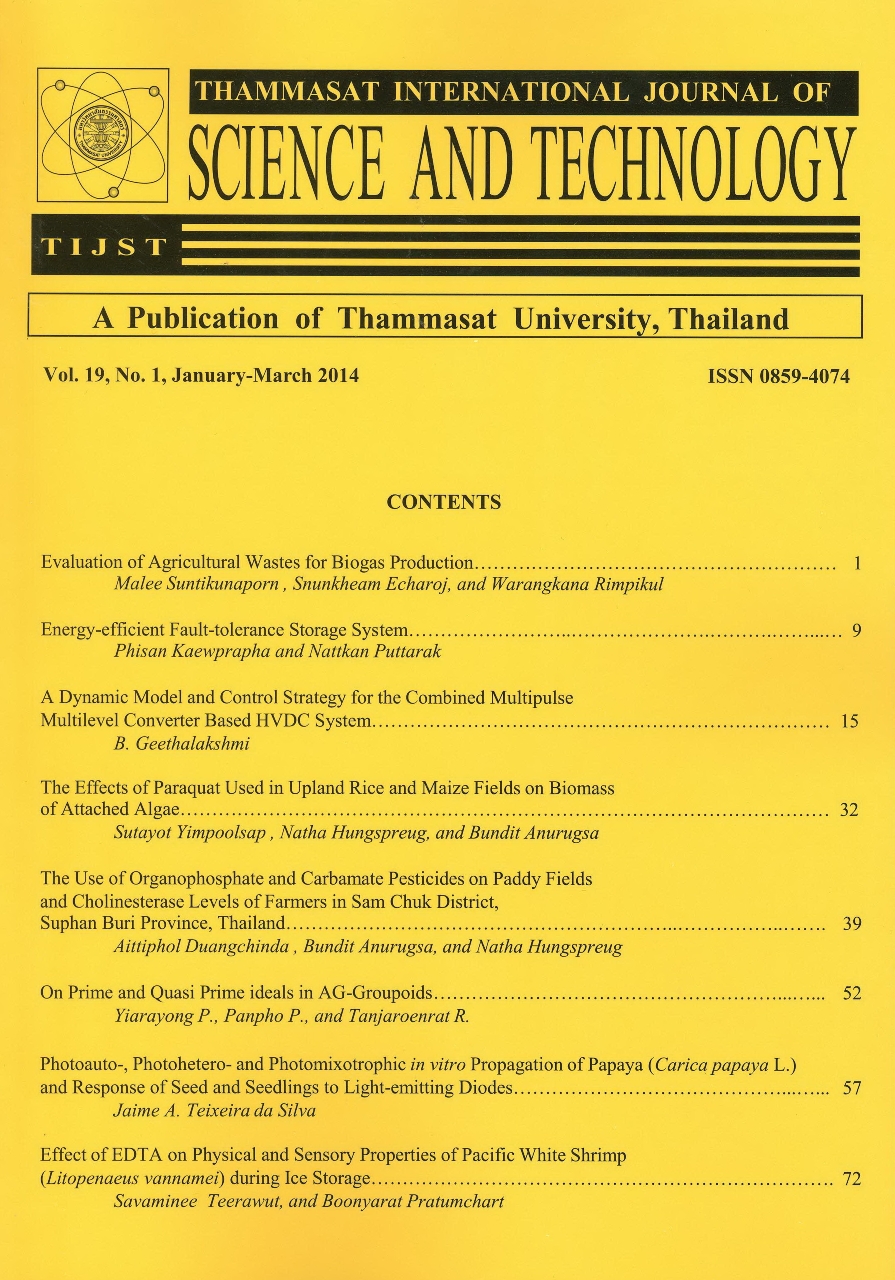Optimization of Fermentation Temperature for Very High Gravity Ethanol Production using Industrial Strain of Saccharomyces cerevisiae SC90
##plugins.themes.bootstrap3.article.main##
摘要
Very high gravity (VHG) ethanol fermentation has been remarkably developed in order to significantly enhance productivity through higher ethanol concentration in fermentation broth. This technique is helpful for saving water and energy consumption, reducing bacterial contamination, and decreasing distillate discharge treatment from the distillation system. However, this technology causes of yeast cell suffers according to several stresses including osmotic stress, anaerobic shift, accumulation of ethanol concentration, and nutrient limitation under VHG conditions. Saccharomyces cerevisiae produces heat during the process of ethanol production. Consequently, a cooling system is recommended during fermentation to disperse heat. There are many advantages including the increased capacity during the fermentation process at high temperatures, the reduction in the cooling cost, and the economic benefits from the increased productivity during fermentation and distillation. Even though VHG ethanol fermentation has several advantages, it causes the fermentation process to become stuck or sluggish, resulting in a prolonged attenuation period and an increase in the amount of unfermentable sugar. Consequently, the efficiency of ethanol production decreases. The basic background of yeast strain on stress tolerance including osmotic pressure, temperature, and ethanol is therefore very important to overcome this challenge. The current research aimed to identify the temperature range (30, 35 and 40°C) within which industrial ethanologenic strain of Saccharomyces cerevisiae SC90 would ferment effectively under VHG conditions. It also investigated the effect of fermentation temperature on cell growth and kinetic parameters of ethanol production from VHG medium (YPD containing 34% (w/v) glucose). The results showed that optimum fermentation temperature for ethanol production using SC90 was 35°C with the maximum amount of ethanol content at 97.03 g/l and volumetric productivity at 2.70 g/l.h. It could be summarized that the remaining percentage viability after complete fermentation indicates the ability of yeast in ethanol and temperature tolerance.
Keywords: Very high gravity fermentation; Saccharomyces cerevisiae; osmotic pressure; ethanol; temperature.


